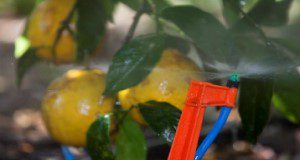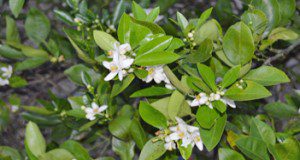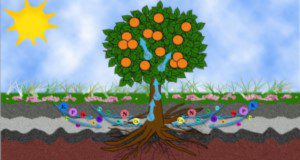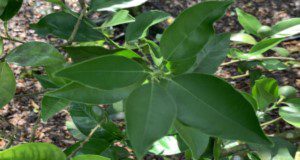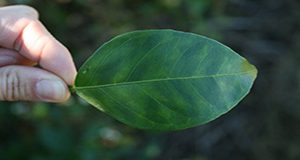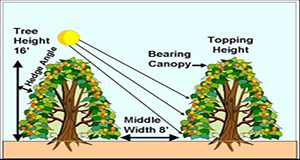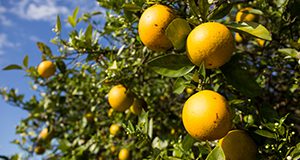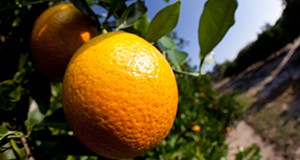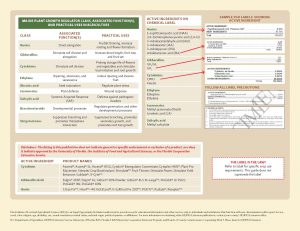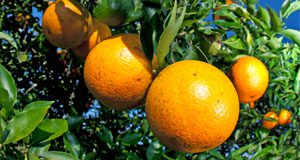To improve production of huanglongbing (HLB) affected trees, nutrition, irrigation, and soil pH should be considered together, because each can influence the efficacy of the others in overcoming the effects of HLB on tree performance. This two-sided poster published by the UF/IFAS Horticultural Sciences Department through the UF/IFAS Citrus Research and Education Center was written by Tripti Vashisth, Davie Kadyampakeni, and Jamie D. Burrow.
https://edis.ifas.ufl.edu/hs1367
Tag: Tripti Vashisth
Management Options for Improving Flowering in Citrus Production
The final fruit yield and, ultimately, returns a grower receives from any given harvest is directly related to the number of viable flowers that are generated and the proportion of those flowers that produce fruit. A grower can improve the ability for their trees to consistently produce a profitable crop of fruit by understanding the steps involved in flowering and controlling the transition to reproductive growth. This new 6-page publication of the UF/IFAS Horticultural Sciences Department was written by Leigh Archer, Miurel Brewer, Bikash Adhikari, Eduardo Esteves, Christopher Vincent, and Tripti Vashisth.
https://edis.ifas.ufl.edu/hs1399
Movement of Plant Nutrients
This new two-page document discusses soil-applied and foliar fertilization for citrus trees as well as mobile and immobile nutrients and how they affect the choice of fertilization. Written by Tripti Vashisth and Chris Oswalt, and published by the UF/IFAS Horticultural Sciences Department.
https://edis.ifas.ufl.edu/hs1373
Citrus Leaf Sampling Procedures for Nutrient Analysis
To maintain balanced nutrients for optimal tree growth, citrus growers need to assess trees’ nutritional requirements. These assessments help prevent any nutrient deficiency or toxicity from compromising tree health and yield or reducing revenue. This new illustrated two-page instructional sheet gives a basic procedure for the citrus leaf sampling process, as well as additional suggestions for HLB-affected trees. Written by Tripti Vashisth, Jamie D. Burrow, Davie Kadyampakeni, and Rhuanito S. Ferrarezi, and published by the UF/IFAS Horticultural Sciences Department.
https://edis.ifas.ufl.edu/hs1355
Citrus Production Guide: Plant Growth Regulators
Plant growth regulators (PGRs) are a tool used to manipulate vegetative and reproductive growth, flowering, and fruit growth and development. PGRs have been successfully used in agriculture for decades to amend plant growth characteristics to maximize yield and grower profit. This new 4-page fact sheet discusses auxins, gibberellins, cytokinins, abscisic acid, ethylene, new classes of plant hormones, use of PGRs for HLB-affected trees, and general considerations for PGR use in Florida citrus groves. Written by Tripti Vashisth, Chris Oswalt, Mongi Zekri, Fernando Alferez, and Jamie D. Burrow, and published by the UF/IFAS Horticultural Sciences Department, February 2018.
http://edis.ifas.ufl.edu/hs1310
Citrus Tree Care for the Home Gardener in the HLB Era
Since the early 2000s, growing citrus has become much more challenging due to plant disease pressure. HLB is the most devastating disease affecting Florida citrus, and threatens the survival of the citrus industry. This 4-page document describes citrus growth and care while managing the risk of an HLB infection. Written by Jamie D. Burrow, Tripti Vashisth, Megan Dewdney, and Brooke Moffis and published by the UF/IFAS Plant Pathology Department, November 2017.
http://edis.ifas.ufl.edu/pp336
Canopy Management of Citrus Trees
Tree canopy and bearing volume are two important factors in fruit production and fruit quality; generally, trees with larger canopy volumes produce more fruit than smaller-canopy trees. Therefore, canopy management is an important aspect of citrus production in Florida to avoid problems associated with overcrowding and excessively tall trees. This three-page document describes canopy management practices for citrus growers. Written by Tripti Vashisth, Mongi Zekri, and Fernando Alferez and published by the UF/IFAS Horticultural Sciences Department, October 2017.
http://edis.ifas.ufl.edu/hs1303
Fertigation for Citrus Trees
Microirrigation is an important component of citrus production systems in Florida. For citrus trees, microirrigation is more desirable than other irrigation methods for several reasons: water conservation, fertilizer management efficiency, and freeze protection. Research has shown that when microirrigation systems are properly managed, water savings can amount to as much as 80% compared with subirrigation and 50% compared with overhead sprinkler irrigation. Research has also shown the important advantage of microsprinklers for freeze protection of citrus. This 4-page fact sheet discusses fertilizer solubility and some common fertigation materials. It also offers a fertigation summary. Written by Mongi Zekri, Arnold Schumann, Tripti Vashisth, Davie Kadyampakeni, Kelly Morgan, Brian Boman, and Tom Obreza, and published by the UF Horticultural Sciences Department, September 2017.
http://edis.ifas.ufl.edu/hs1306
Grove Planning and Establishment
Many factors need to be considered when preparing for new tree plantings. Careful planning and preparation is necessary to ensure success and reduce future frustrations. This three-page document describes the factors that contribute to the success of new grove establishment. Written by Mongi Zekri, Ute Albrecht, Christopher Vincent, and Tripti Vashisth and published by UF’s Horticultural Sciences Department, September 2017.
http://edis.ifas.ufl.edu/hs1302
Managing the Health and Productivity of HLB-Affected Groves
After years of extensive research from across the world, we still do not have a cure for HLB; however, we have learned a lot about this disease, the plant’s response to the disease, and the disease vector. Based on scientific and observational information gathered in the last decade, a number of tools and strategies are currently available for growers to maintain the health and productivity of HLB-affected trees. This four-page fact sheet will shed light on these currently available horticultural inputs and practices that can be implemented immediately by growers to maintain and improve citrus tree health.Written by Tripti Vashisth and published by the Horticultural Sciences Department.
http://edis.ifas.ufl.edu/hs1288
Citrus Nutrition Management Practices
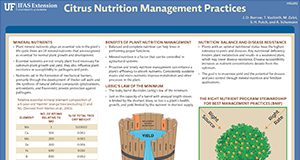
A new two-page fact sheet has been published by the Horticultural Sciences Department and the UF/IFAS Citrus Research and Education Center about citrus nutrition management practices. It was written by J.D. Burrow, T. Vashisth, M. Zekri, S.H. Futch, and A. Schumann.
http://edis.ifas.ufl.edu/hs1292
Florida Citrus Activity Book
The Florida Citrus Activity Book is a basic introduction to Florida citrus trees, diseases, and pests. This 20-page booklet is for elementary students. Written by J.D. Burrow, M.M. Dewdney, M.E. Rogers, and T. Vashisth and published by the Plant Pathology Department.
http://edis.ifas.ufl.edu/pp331
Quick Reference Guide: for Plant Growth Regulators (PGR) in Florida Citrus Production
A new two-page fact sheet explains Plant Growth Regulators (PGRS) and their application and use in Florida citrus production. Written by T. Vashisth and J.D. Burrow and published by the Horticultural Sciences Department.
http://edis.ifas.ufl.edu/hs1284
Huanglongbing (HLB; citrus greening) and Nutrient Deficiency Identification
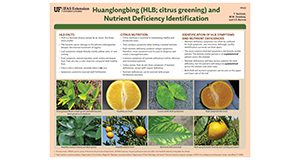
Huanglongbing (HLB) is a bacterial disease that is spread by an insect, the Asian citrus psyllid. This two-page fact sheet, which is best viewed as a PDF, http://edis.ifas.ufl.edu/pdffiles/PP/PP32800.pdf, explains how to tell the difference between HLB symptoms and symptoms from nutrient deficiencies. Written by T. Vashisth, M.M. Dewdney, and J.D. Burrow and published by the Plant Pathology Department.
http://edis.ifas.ufl.edu/pp328
Citrus Nutrition UF/IFAS Grower Trials (Pamphlet)
Interested in learning more about citrus nutrition grower trials? This two-page pamphlet provides information on the goals, objectives, benefits, and considerations of the trials as well as specific information about trials being held from 2015-2017. The pamphlet also contains a sign up form for the trials. Written by Tripti Vashisth and Jamie D. Burrow and published by the Horticultural Sciences Department.
http://edis.ifas.ufl.edu/hs1283
